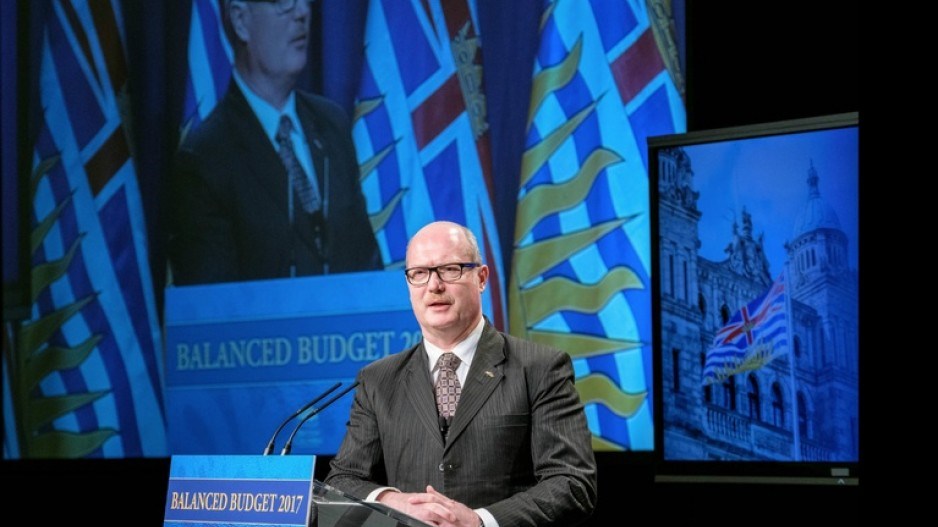In the weeks leading up to the 2013 provincial election, B.C.’s economy was “muddling along” with low job growth, “muted” consumer spending, and an expected gross domestic product growth rate of 2.3%.
Fast-forward four years, and the BC Liberal government is heading into an election when the B.C. economy is firing on all cylinders, with record exports of $40 billion and annual GDP growth rates of 3.3% in 2014, 2015 and 2016.
Much of B.C.’s recent economic growth has been concentrated in Vancouver, where a hot housing market has primed the construction sector.
Vancouver had record job creation in 2016 (60,000), record new housing starts (27,000) and a GDP growth rate of 4%, according to the Conference Board of Canada.
Although housing has been a major economic driver for Vancouver, its high-tech, tourism and film industries have also posted strong growth. B.C.’s agri-food and seafood sectors have also broken export records for four years in a row now, hitting $3.8 billion in 2016.
“We were a middling performer back in 2013 … and in the last few years we’ve really been at the top of the heap,” said Jock Finlayson, chief policy officer for the Business Council of BC (BCBC).
But much of B.C.’s growth has been due to macroeconomic factors beyond government control, like commodity prices, interest rates, market demand and a low Canadian dollar.
“The type of growth we’ve seen in B.C. since 2013 would have happened irrespective of policy decisions made by government,” said Rob Gillezeau, assistant professor of economics at the University of Victoria. “Our growth has been driven by the housing sector, and that can’t last forever.
“Big picture, the economy has done fine, and it’s done fine regardless of the decisions of this government.”
But Finlayson said the government deserves some credit for its fiscal management, its taxation policies and its focus on economic diversification, which has helped shield B.C. from the kinds of shocks Alberta and Saskatchewan have suffered.
“I would give the government pretty good marks overall on their stewardship of the economy, recognizing they can’t take credit for all the positive things directly,” Finlayson said. “But they’ve certainly made a contribution.”
B.C. has produced four surplus budgets and maintained a triple-A credit rating, while every other province in Canada, except Quebec, has been producing deficit budgets.
“I think overall our provincial government has been practising great business fundamentals: balancing the budget, investing in a more diversified economy,” said BC Chamber of Commerce president Val Litwin.
The central job creation policy of the BC Liberals in 2013 was the promise of a new liquefied natural gas (LNG) industry.
Had the government made good on its promises, hundreds – if not thousands – of workers would have been on site by now building new gas pipelines and LNG plants in Kitimat and Prince Rupert.
But a deep and prolonged oil price plunge forced oil and gas companies like Petronas and Shell to defer final investment decisions. Only the smaller Woodfibre LNG plant in Squamish has received a final investment decision.
However, Litwin does not see the Liberal government’s policies on LNG as a total failure. Since 2012, an estimated $20 billion has been invested in B.C.’s natural gas sector in new gas wells, pipelines and gas processing plants. While some of that investment has been driven by the Montney formation’s natural gas liquids – which have value irrespective of an LNG market – much of the investment has been to lay the foundation for LNG.
“Even before we have a plethora of operating LNG terminals, billions have been invested in the B.C. economy to prepare for the industry,” Litwin said. “And that is a provincial initiative. The province needs to be given credit for that. There has been an economic lift there.”
Major industries like forestry and mining tend to be affected more by commodity prices and global market demand than they are by provincial policies. It’s small business where provincial policies on regulations and taxation tend to have the greatest impact.
Litwin gives the Liberal government full marks for its red tape reduction strategy, which has made it easier for mobile businesses – contractors, for example – to get business licences when they move from one municipality to another. He also applauds the establishment in late 2012 of an auditor general for municipal government.
And though immigration is a federal matter, Litwin also credits the provincial government for lobbying Ottawa on behalf of business when the federal government made changes to the temporary foreign worker program, which hit the hospitality and tourism industries particularly hard.
“The province really stepped up to the plate and did a lot of work working in tandem (with business) to co-ordinate on policy recommendations to the federal government to make it more friendly for the tourism and hospitality industry here in B.C.,” Litwin said. “And that’s a big part of our economy. The province was an incredible partner in pushing for some of these updated recommendations that we’ve seen come down from Ottawa.”
More broadly speaking, Finlayson said B.C. businesses have also benefited from provincial government financial management that has kept various levels of taxation in check.
“B.C., I think, is recognized as having the strongest controls over government spending of any province in the country in the past few years.”




